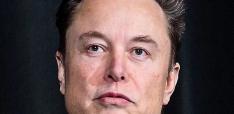Ukraine War: Putin’s Off Ramp and Why he is Unlikely to Take It

Rod Thornton one recent developments in Ukraine and the calculated use of alarmist language by Biden.
The world is now witness to a new phase in the Ukraine war. The attack on the Kerch bridge and the subsequent retaliatory Russian missiles strikes on Kyiv and other Ukrainian cities indicate that the war is escalating. But just how far will this escalation go and is a full-scale nuclear exchange – however unthinkable – on the cards at some future point?
It is coming to be understood that the war in Ukraine needs to be prevented from assuming proportions that are dangerous for the entire world – and not just for Ukraine. One argument advanced by US president Joe Biden last week is that the west should offer the Russian president, Vladimir Putin, an “off ramp” – that is, a way out for him so that he can call a ceasefire that appears to offer Russia a degree of military success in Ukraine that Putin can take to his people and sell as a “victory”. But it seems to be a pious hope. Putin, it is becoming increasingly clear, will have to be forced onto an off ramp rather than merely being offered one.
The Kerch bridge is Putin’s bridge. He promised the people of Crimea that he would build it soon after Russia annexed the region in 2014. He found the $US3.7 billion (£3.35 billion) that it took to build it and he drove the first vehicle over the bridge when it opened in 2018.
Since then it has been a vital artery – not only for the economy of Crimea but also, from the beginning of the current war, a crucial logistical link supporting the war effort. For it to be damaged in the way that it has and so publicly was a personal blow for a Russian president who already appears to be under significant domestic pressure because the war is not going Moscow’s way. Hard-line elements within the country are increasingly questioning Putin’s leadership and his perceived weakness in dealing with Ukraine.
It appears that Putin, in order to stay in power and accommodate the hardliners, can only go one way: he has to escalate. This was seen recently in the mobilisation drive and is very definitely evident in the current missile strikes on many Ukrainian cities. These are targeting, it seems, civilian infrastructure.
Putin clearly does not care how many civilians are killed. There are dangerous signs here. Will he keep to using missiles with only conventional warheads? It may be the case that he feels the need, and particularly when faced with further major battlefield reverses, to use the nuclear option: the “small”, tactical variety that has been much discussed and occasionally threatened – at least once by Chechen leader Ramzan Kadyrov, a close Putin ally, who urged his friend to escalate with the use of such weapons.
What can the west – and in particular the US – do to prevent such an outcome? One idea is to offer Putin this off ramp. But how? In a speech last week, Biden clearly showed he understood Putin’s predicament:
Where, where does he get off? Where does he find a way out? Where does he find himself in a position that he does not — not only lose face but lose significant power within Russia?
Hard choices
Biden offered no answers to his own questions. But one way might be for the western diplomatic community to put pressure on Kyiv to rein in its battlefield advances and to accept some territorial losses to Putin. This pressure could come from withholding the western-supplied arms or through the cutting of the major overseas funding that is currently keeping the whole Ukrainian economy afloat.
The levers are there. But they would be hard sells. Ukraine’s president, Volodymyr Zelensky, has said many times that Ukraine would accept nothing less than a complete Russian withdrawal from its captured territory and many in the west would rail against any military or financial constraints being applied on Kyiv.
Another sop to Putin might be for Nato to say to Moscow that, unequivocally, Ukraine (and Georgia) will never be allowed to join the alliance. But this would have little support within Nato itself – and with countries like Sweden and Finland who also want to join.
Moreover, all of these above olive branches to Putin smack of appeasement. The general western mantra is that aggressive Russian behaviour cannot be allowed to succeed.
So with no off ramp seemingly available, what options are left to encourage Putin to de-escalate? Perhaps the only one that is available is the force of rhetoric. This appears to have been evident last week when Biden warned Putin that the world faced Armageddon – literally the end of the world – if he decided to use nuclear weapons as part of his war in Ukraine. Biden said that the world was closer to a large-scale nuclear conflagration than at any time since the Cuban missile crisis of 1962.
On first viewing, Biden’s choice of language seems overly stark and alarmist. Certainly, it was seen as such by, among others, the French president Emmanuel Macron, who cautioned that “we must speak with prudence” in reaction to Biden’s words.
But it is possible to understand why it has to be used. Stark and alarmist rhetoric appears to be the only tool available to give some sort of pause to Putin and his Kremlin entourage. Putin must be warned of the dangers of further escalation that could lead to an uncontrollable slide into all-out nuclear war. In the absence of a carrot to offer Putin, there has to be at least some indication of the likely stick – in this case the disaster that his strategy in Ukraine must unavoidably lead to.
But Biden’s words are also a sign of weakness rather than strength. The fact that they are having to be used should give pause to us all. The US is out of viable options in terms of encouraging de-escalation; except, perhaps, for one. It may be the case that a decision is made to try and force Putin onto the off ramp, whereby he is coerced into de-escalation. This may take the form of supplying Ukraine with offensive weapons that truly change the battlefield picture in Kyiv’s favour or, indeed, a degree of direct Nato intervention.
But taking this line may lead to intense Russian retaliation and merely bring about what appears to be already the main danger – uncontrollable escalation to Armaggedon.![]()
Rod Thornton, Associate Professor/Senior Lecturer, King's College London
This article is republished from The Conversation under a Creative Commons license. Read the original article.
Photo by Алесь Усцінаў from Pexels


